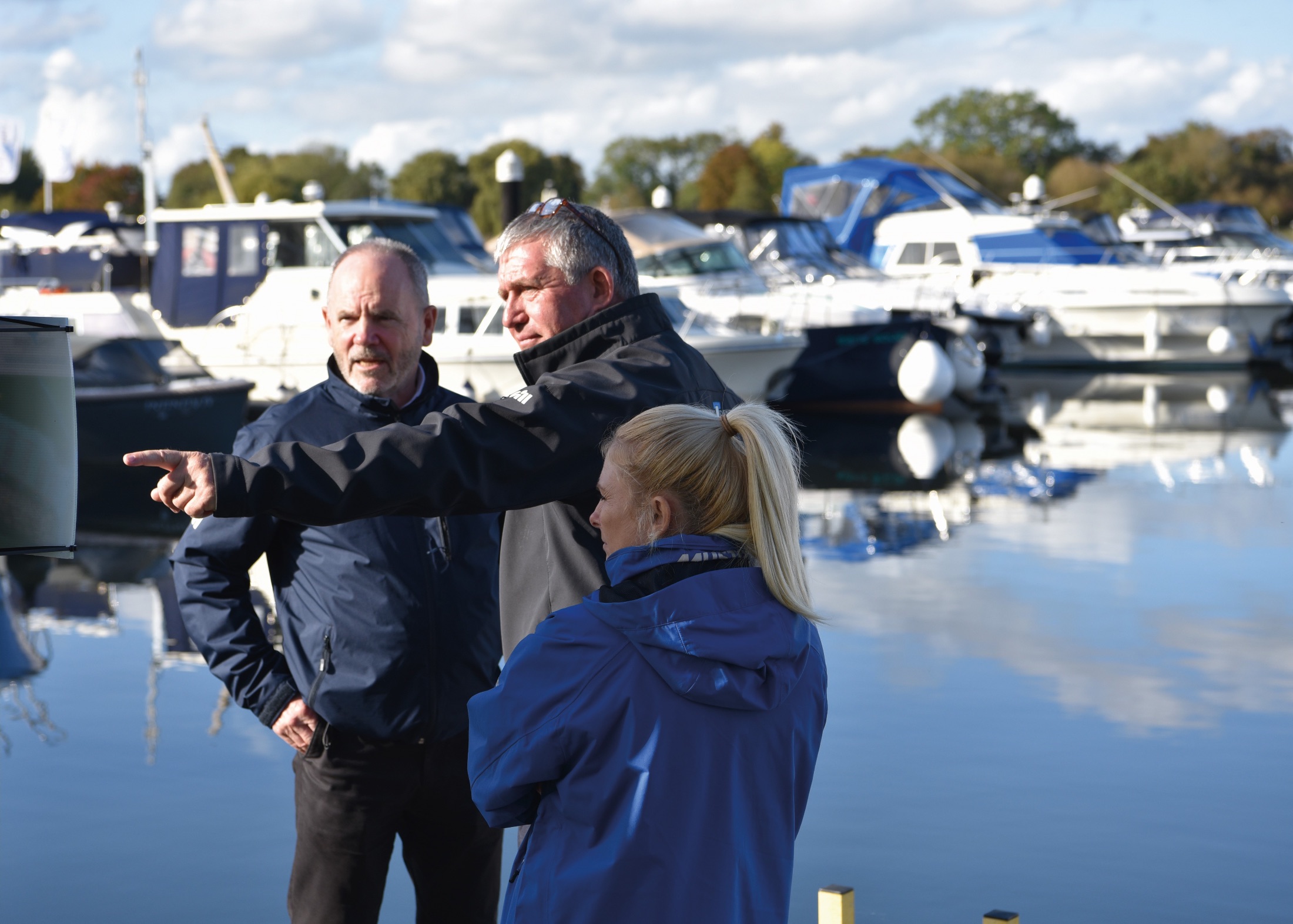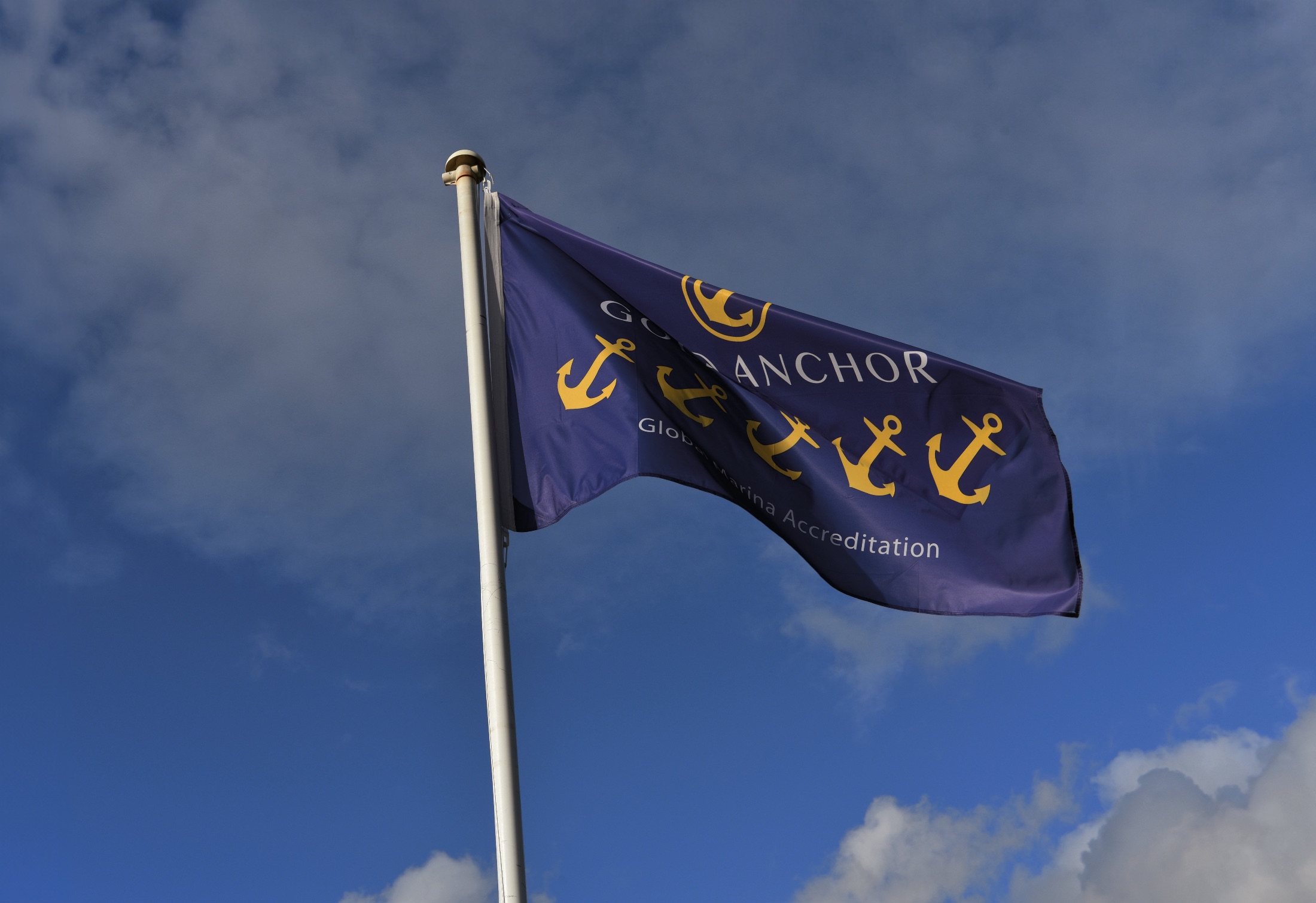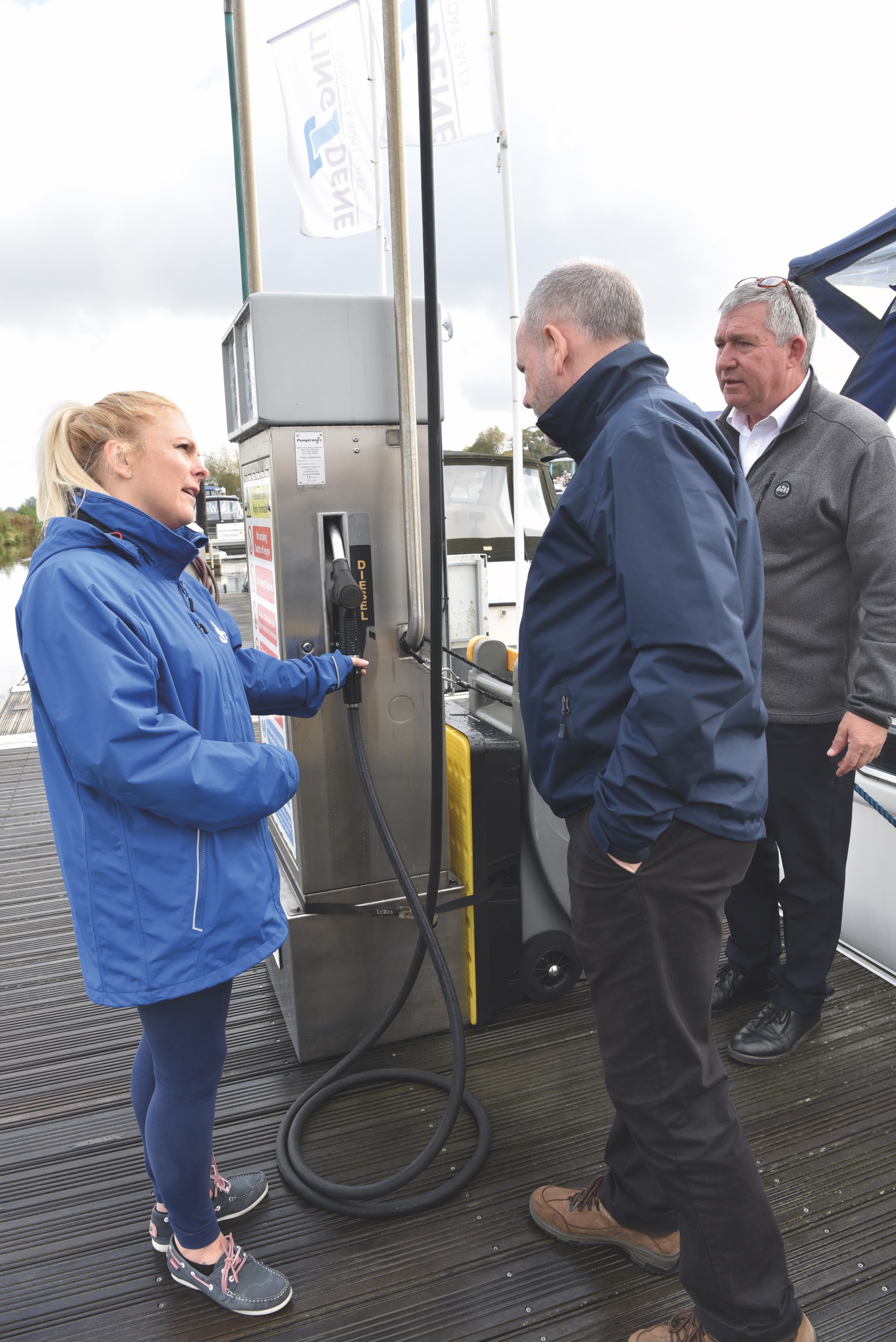Testing Times
Gaining accreditation for the Gold Anchor Award Scheme for marinas is far from a box ticking exercise, as we discovered when shadowing a recent re-assessment of Tingdene’s Racecourse Marina in Windsor last autumn.
The Gold Anchor Award Scheme has been in existence for more than a quarter of a century. Its founding fathers and scheme administrators – The Yacht Harbour Association (TYHA) in the UK and the Marina Industries Association (MIA) from Australia, have continued to develop it since. Gold Anchor marinas can be found in 30 countries across the world.

There is a foundation level Gold Anchor Award with a low cost of entry based on self-assessment, followed by five independently assessed grades in the scheme – two through to five, plus a relatively recently introduced 5 Gold Anchor Platinum award, realistically only likely to be achieved by very high-end new build superyacht style marinas scoring 95 per cent or higher. Where a marina ranks depends on the balance of the facilities it offers and the quality and consistency of what it does.
The Gold Anchor scheme’s assessors are provided with detailed guidance to ensure the scoring is objective, irrespective of who examines the marina. It’s a system that has continually evolved over its 25-year history to provide a common benchmark across the four continents in which it operates.
“The Gold Anchor Scheme is a development process,” TYHA General Manager and British Marine Head of Participation Jon White confirms. “We are here to help marinas improve their standards. We don’t just ask to see whether a marina has a required process or piece of equipment. We ask how it might deal with a particular situation. Sometimes we’ll quiz staff to see if they have considered other options and offer alternate ideas we know can work.
“From the outside, people will see the scheme as a trusted ratings system to help prospective visitors and long-term berth-holders make their choices. But it does much more again for the marina in terms of serving as a benchmark for staff and owners, providing a regular audit point and offering an indication of its quality and risk control for insurers and other interested organisations.”
The scheme in practice
We visited Tingdene’s Racecourse Marina in Windsor on the River Thames last October (2023) to see an assessment in action. A 5 Gold Anchor flag was fluttering at the masthead outside of the marina office. The task of the day for General Manager Mark Pearce was to ensure that the soon-to-expire three-year accreditation period for the award would be renewed and that flag could continue to fly.
This assessment was Mark’s first at Racecourse but not his debut as an experienced marina manager, so he had a good idea what to expect. Nevertheless, a touch of nervousness made the point clearly enough that this was no foregone conclusion. To avoid dropping any of its anchors, Racecourse Marina would need to score 85 per cent or higher against very closely defined criteria. The standards of the scheme are regularly raised year-on-year to match market and legislative demands; maintaining the same level as achieved three years prior might not be sufficient.
Our assessors for the day were Jon White, accompanied by a TYHA Executive Hayley Cloke, who acted as an observer. What followed was a close inspection with much questioning, note taking and evidence gathering covering six key areas of the marina – ambience; customer service; on water and onshore facilities and infrastructure; environmental impact; and policies planning and procedures.

Drilling into the detail
The value of the assessment process quickly became apparent. A familiarisation walk around got straight into the detail, with rapid fire questions about initial observations. The rest of the morning was spent in the office, spot checking paperwork and processes covering all aspects of the marina’s operation, from when the slings for the crane were last inspected or changed, to employment training and management practices. Then it was back to more detailed inspections of the marina pontoons, grounds, the boatyard, and the facilities.
Jon and Hayley examined every detail, from safety provision on the pontoons and the finer details of the male and female toilet facilities to management of boatyard storage and the contents and location of spill kits. Mark accompanied the team to answer questions and explain the marina’s working practices and its infrastructure investment plans.
The walking stopped at frequent intervals for discussion of the merits of a process or an item seen. Ideas were exchanged around possible improvements and the suitability or otherwise of best practice that has been proven elsewhere.
As we headed into late afternoon, the focus moved onto findings. Mark wasn’t offered a definitive report on the day but had been careful to make note of any areas of concern. These were discussed before Jon and Hayley left, giving the marina team a head start on actions.
On this assessment it was a short list. There was some work to do on safety signage. Sun-faded pontoon safety ladders required restoration to bright yellow and the addition of some means of eye-level visual identification. White diesel containers required a spill-proof storage platform and a fracture in the concrete boatyard hardstand needed repair.
The issues were subsequently documented by the TYHA team, and a report issued to confirm the findings and provide a timescale within three months to deal with any outstanding points. With remedial work confirmed as done, the welcome news arrived in January that Racecourse Marina could proudly fly its 5 Gold Anchors for another three years

Why enter the scheme?
While some elements of the Gold Anchor scheme mirror legislative requirements, the majority are founded on ever-evolving best practice, including TYHA’s Code of Practice. Participation in the scheme is voluntary and fees are involved so the obvious question to ask the person who has been prepping for this for more than two months is – why participate?
“There are several reasons,” Mark responds. “The scheme demonstrates how we stay on top of things that make our berth-holders smile, such as ensuring the facilities are working and the grounds maintained. It helps our team to recognise and be proud of the high standards of Racecourse Marina. It also ensures important operational aspects like health and safety are being tested by an independent body that has a deep knowledge of marina businesses.
“I’ve worked in boating for 30 years now and the quality that our customers expect has increased every year. They want higher standards and better service. To meet that demand often requires significant capital spend. Given all that investment and effort it’s good to demonstrate what we offer by retaining our 5 Gold Anchor status. It sets us apart as an independently and professionally reviewed destination for new customers and affirms our drive to improve quality for existing berth-holders.”
Further information
To learn more about the Gold Anchor marina ratings scheme, please visit
www.tyha.co.uk/gold-anchor

Article first published, BM Magazine, Spring 2024
If you have any interesting story to tell and would like to share it with fellow members, please email pr@britishmarine.co.uk with details.

